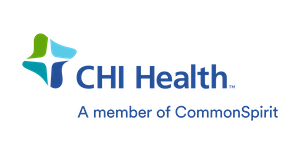The CHI Health School of Radiologic Technology offers a 23-month program of study. The program begins each year in late August. Students participate in academic courses focused on patient care and interactions, anatomy, physiology, pathology, radiographic procedures, radiation biology and protection, and image production.
The program also includes education in Computed Tomography during the second year of study. Students participate in clinical education from the beginning of the program at the CHI Health Omaha metropolitan area hospitals to include experience in all aspects of diagnostic imaging. Students also spend some time in each of the imaging specialty modalities to determine areas of interest for further specialization. Students earn a Bachelor of Science degree and meet the didactic requirements to sit for the American Registry of Radiologic Technology (ARRT) certification and registry exam. Once the student passes the ARRT exam, they are registered technologists and are entitled to use the initials RT (R).
Accreditation
The CHI Health School of Radiologic Technology is authorized on an annual basis by the Coordinating Commission for Postsecondary Education to grant a Bachelor’s Degree beginning in 2020.
Coordinating Commission for Postsecondary Education
P.O. Box 95005
Lincoln, NE 68509-5005
Phone: (402) 471-2847
The CHI Health School of Radiologic Technology is licensed and authorized on an annual basis by the State of Nebraska Department of Education to grant an Associate of Applied Science in Radiologic Technology degree and approved for veterans' and other eligible persons' benefits.
Program Director, PPCSVE
PO Box 94987
Lincoln, NE 68509-4987
500 So. 84th St., 2nd Floor
Lincoln, NE 68510-2611
The radiology program is accredited by the:
Joint Review Committee on Education in Radiologic Technology
20 N. Wacker Drive, Suite 2850
Chicago, IL 60606-3182
Phone: (312) 704-5300
Email: [email protected]
The program’s current award is (8 years). General program accreditation information and the current accreditation award letter can be found here. https://www.jrcert.org/programs/chi-health-immanuel-medical-center/
Mission Statement
To deliver accessible, high quality academic and clinical education within world-class facilities to prepare the next generation of medical imaging professionals, advocating for their communities and those they serve.

